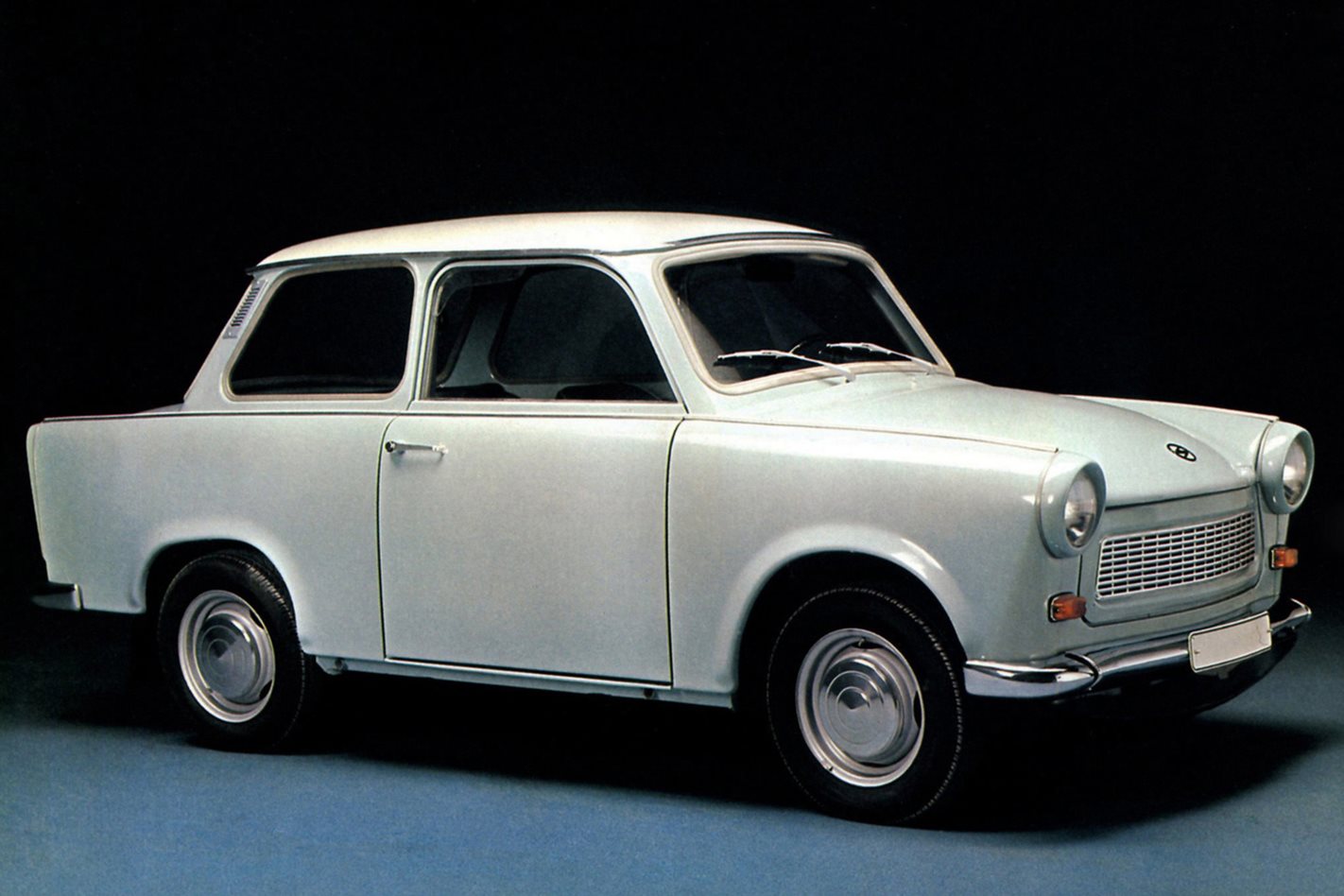History is a catalogue of communism’s failings, which in the automotive world have congealed in the form of the Trabant 601.
It was this smoking, two-stroke, garbage-bodied small sedan that first rattled into the consciousness of many westerners with the fall of the Berlin Wall in November 1989, bearing wide-eyed East Germans who, like their cars, had been frozen in time since the 1950s.
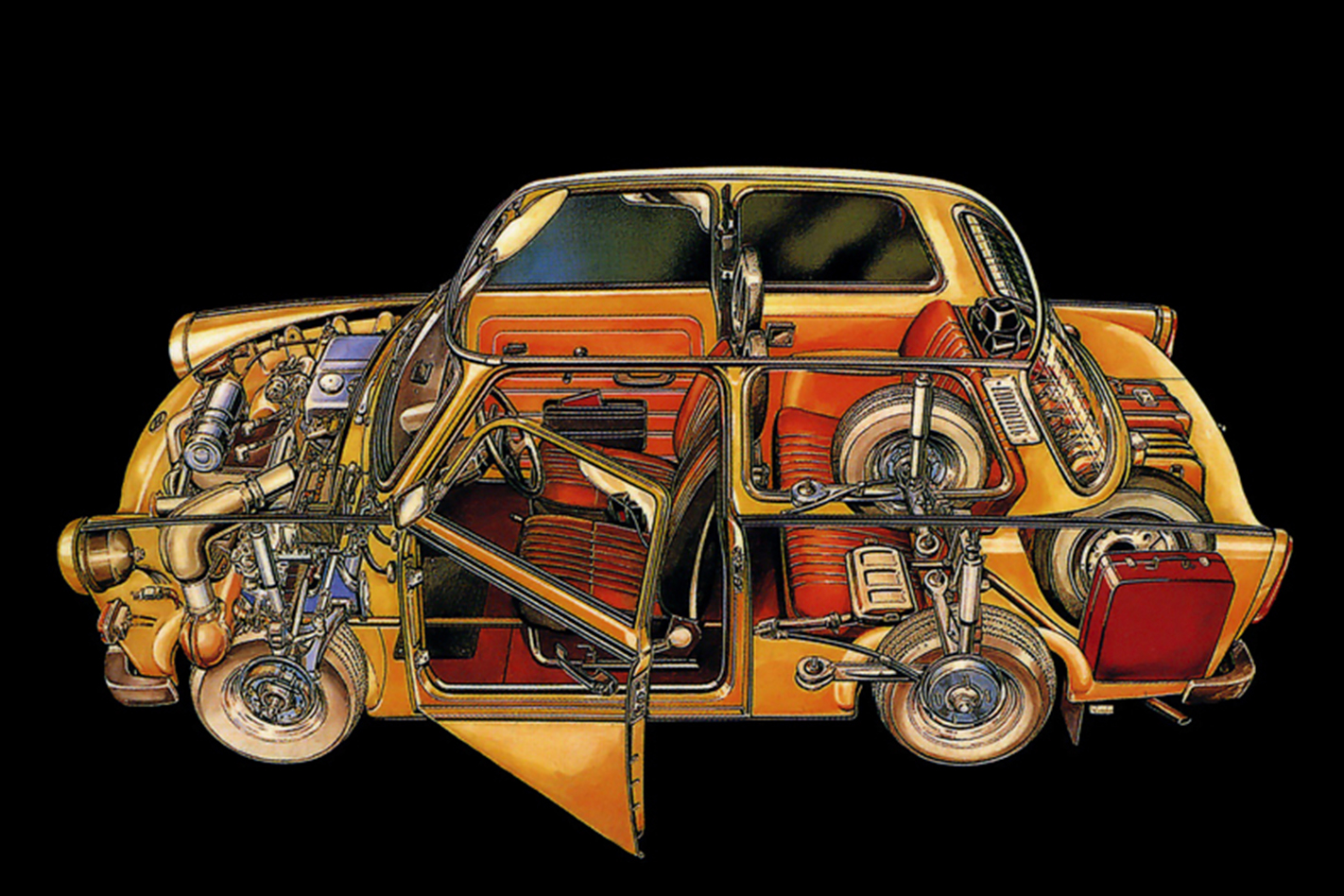
For even getting mobile, the Trabant has the capitalist West to thank. In 1949, VEB AWZ (Volkseigenes Betrieb Automobilwerke Zwickau, or ‘Zwickau Automobile Works Company Owned by the People’) occupied the war-ravaged plant in which Audi had been founded by August Horch in 1910 and where the Auto Union grand prix cars of the 1930s were also built.
The Soviet enterprise began assembling the pre-war DKW F8, a 600/700cc two-stroke, front-drive model and developed a three-cylinder version, the F9.
By 1955, a scarcity of steel contributed to the launching of the AWZ P70, clothing the familiar 700cc twin in a more modern body of pressed ‘Duroplast’, a wool-fibre-reinforced phenol resin.The P70 was produced as a two-door sedan and wagon and a surprisingly attractive coupe (later to inspire the Nissan Figaro).
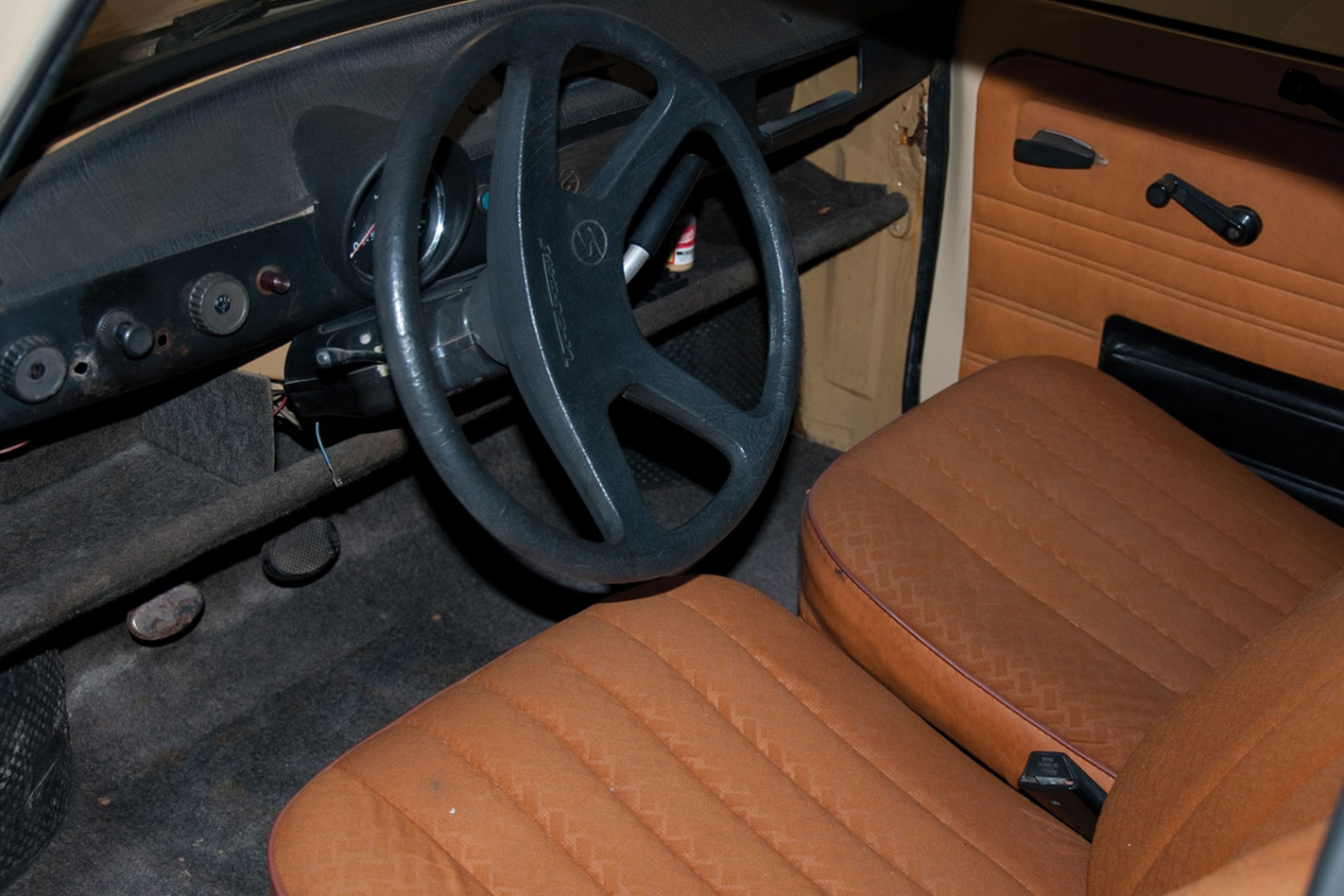
The P70 was joined and soon superseded in 1957 by the P50, a small, austere two-door sedan and wagon of 500cc, its Duroplast body now using waste cotton fibres and mounted on a pressed steel chassis. In 1962 came a 600cc version, the Trabant 600, which in 1964 was rebodied to become the long-running Trabant 601. Ongoing mechanical upgrades to the initially 17kW, air-cooled 594cc drivetrain would include needle-roller con-rod bearings, a two-stage carburettor, a four-speed gearbox and synchromesh, and in 1983, 12-volt electrics.
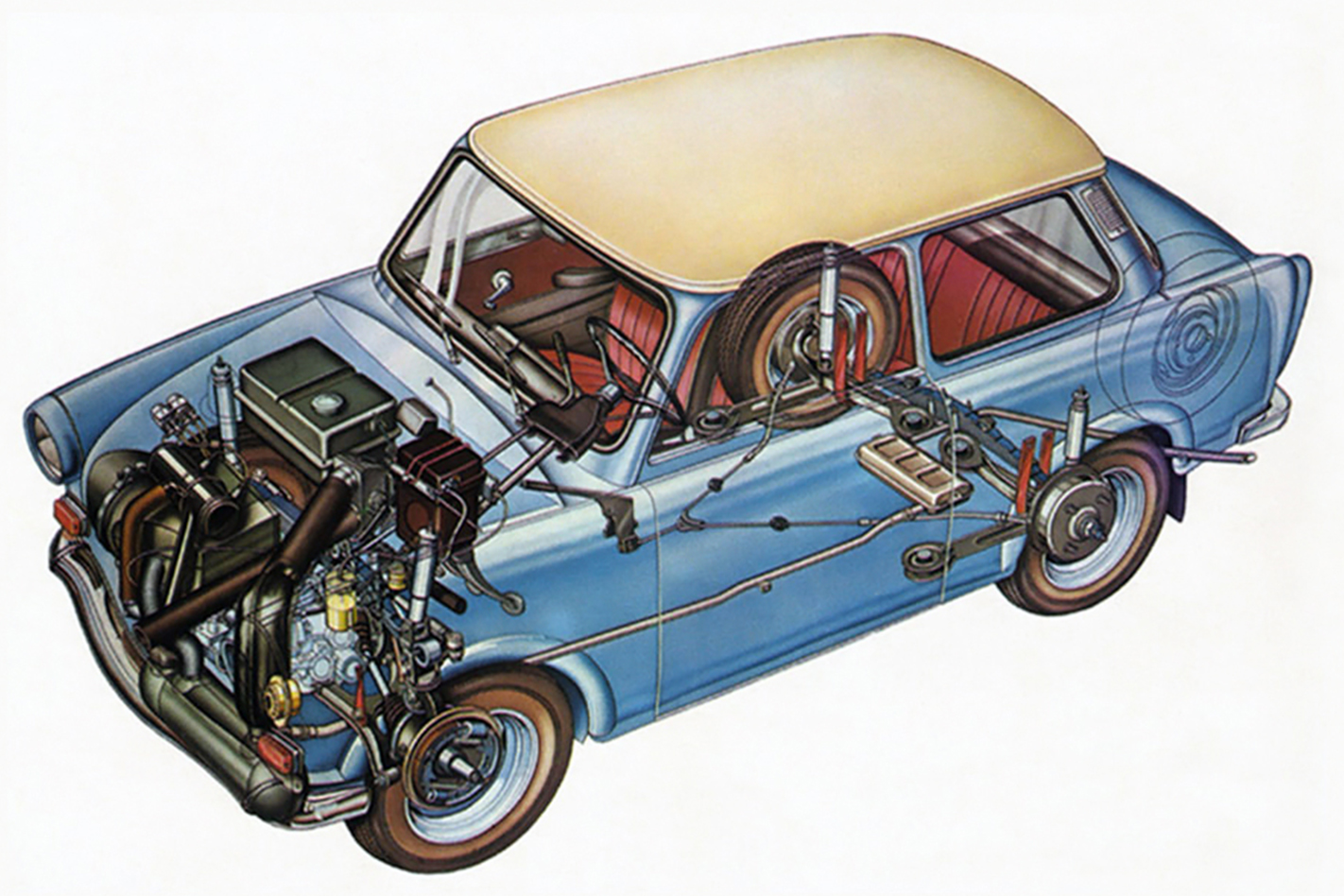
The ‘Trabi’ was available in two-door sedan or wagon bodystyles, and even a capitalist-running-dog ‘Universal S de Luxe’ spec with community-dividing chrome bumpers. Waiting lists often exceeded 10 years, and for colour choice, the sheeple took whatever they were bloody-well given.
In 1990, perestroika-tech wed the Trabant 601 to the 1.1-litre four-cylinder engine and five-speed floor shift from the VW Polo. However, within a year the Trabi would wither like a vampire in the sunshine of a market economy. The last Trabant 601 was produced in July 1990, by which time 2,818,547 had been built.
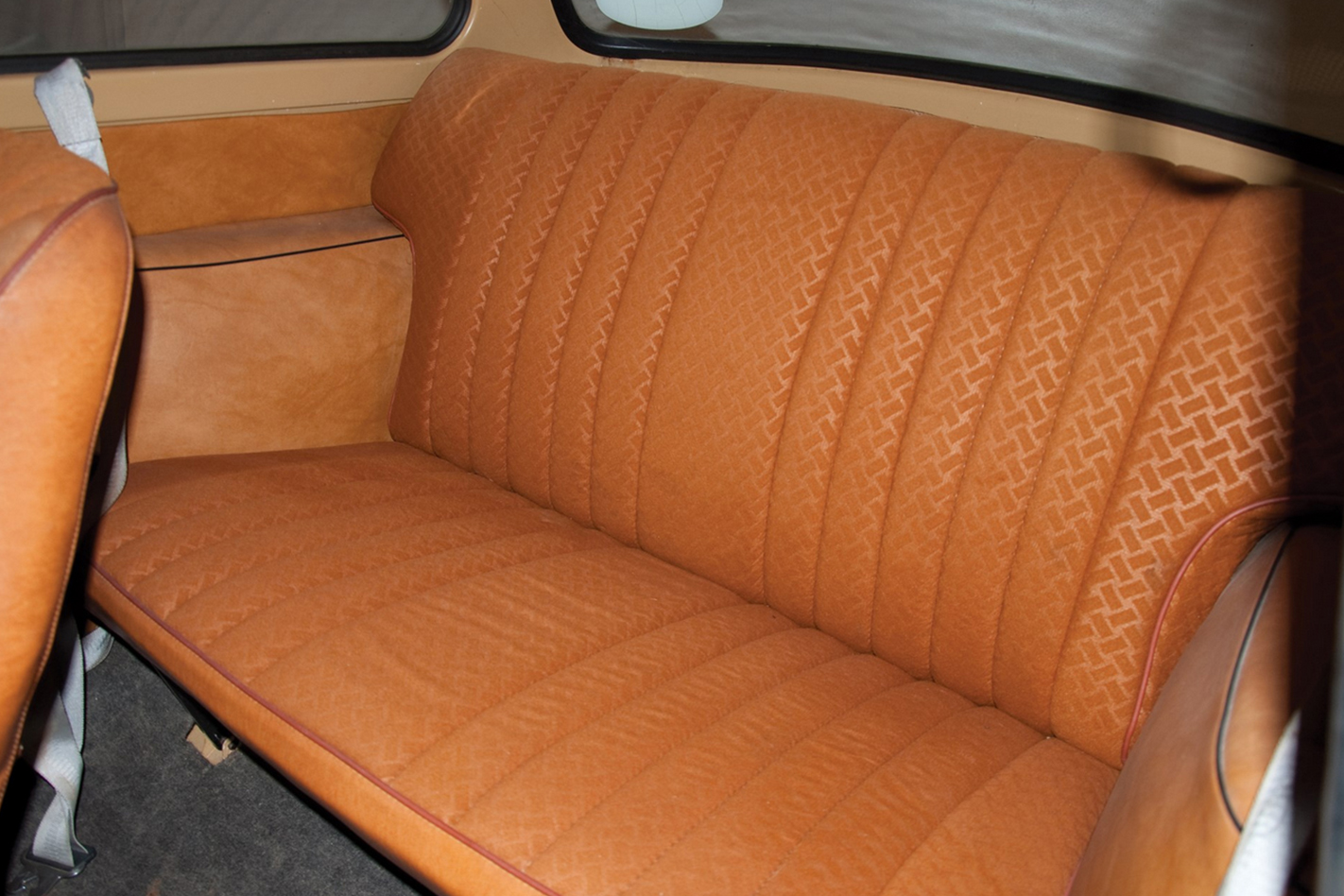
Not safe for recycling
The Trabant 601, with its tight-for-four interior, was a study in Eastern Bloc austerity, dull design and crap plastics. Non-recyclable, toxic Duroplast bodies were a disposal nightmare. Chemists developed a car-eating bacteria, and the Trabi factory found a new business in shredding them for use in cement pavers.
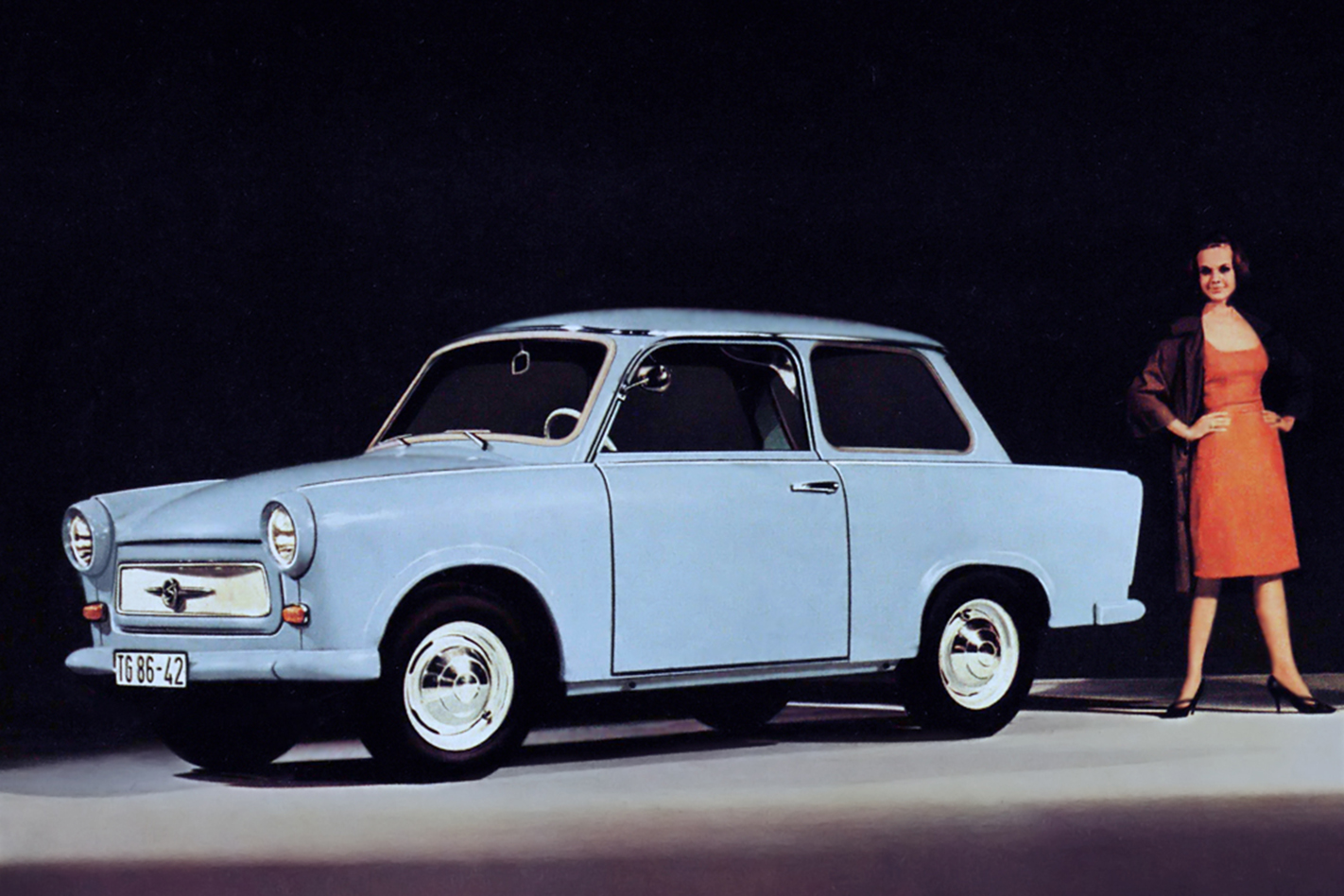
An engine in a bag?!
The two-stroke, 594cc two-cylinder sent 22.4kW at 4200rpm to the front wheels via a four-speed column shift (with optional Hycomat automatic clutch) and could drag the 615kg car to 80km/h in 23sec en route to 100km/h. The engine was shrouded in a leather bag to duct cooling air and cut noise.

1964 Trabant 601 in numbers
- 3555mm: overall length
- 28 years: said to be the typical Trabi lifespan
- 8500: price in Deutsche marks in 1985, a typical 12 months’ wages
- 10kg: biomass remaining after bacterial breakdown of a Trabi body

